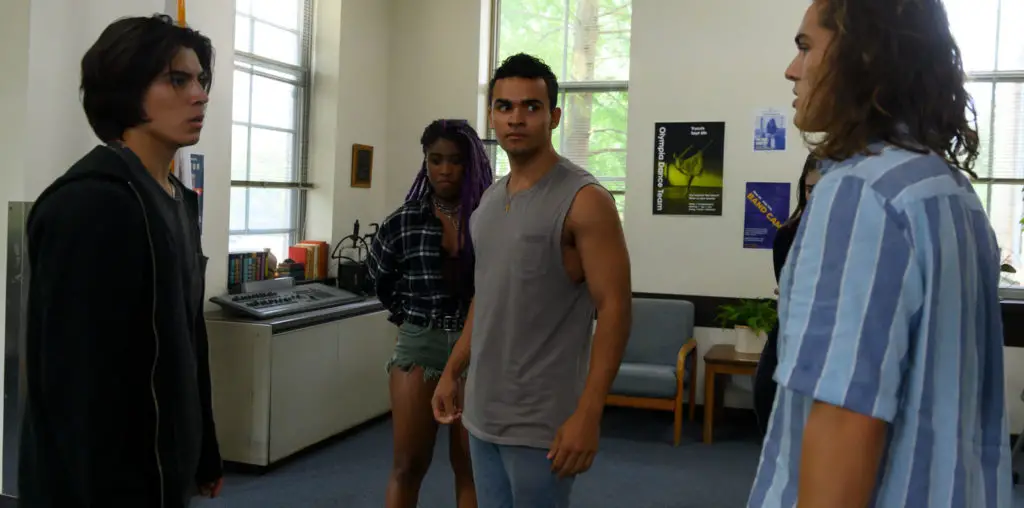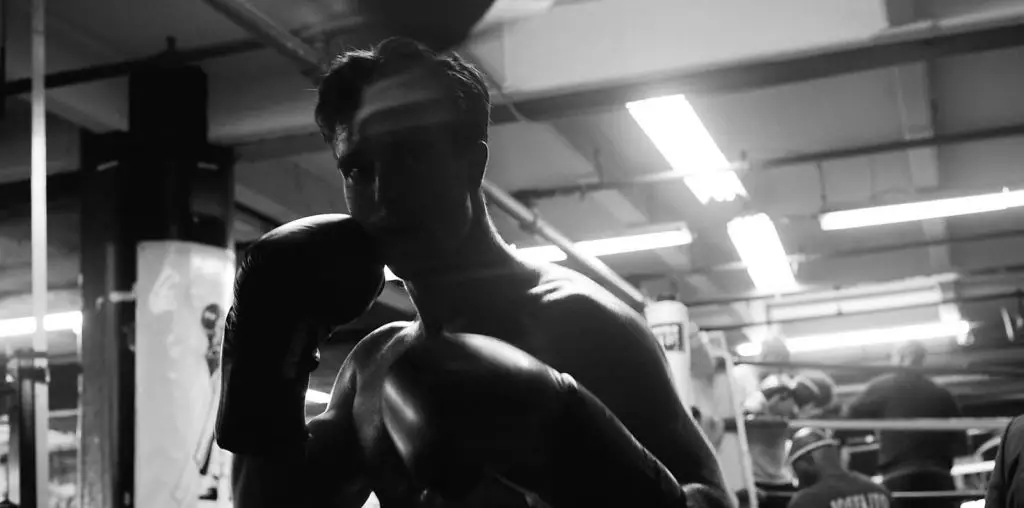
While it’s likely the year 2000 will be remembered as one of the more disappointing years in film, it should be recognized this was the year in which the neo-genre that is IndieWood reached full flower. Increasingly, the medium of film has produced work fusing independent sensibility and style with more mainstream plot and characters-this year, films like “American Psycho” combined traditional horror with indie-level insanity, as “Quills” looked like a period piece but thematically read like a treatise on anti-authority. “Traffic,” now arriving aptly at year’s end as if to sum up the situation, signals the most masterful wedding thus far between the two once warring factions of independents and Hollywood. Through its brilliantly hopeless look at today’s so-called war on drugs, “Traffic” classically captures the story of the drug trade while edgily embodying our own enigmatic relationship to the tale.
The multiple stories “Traffic” charts to collectively tell the full story of the contemporary drug-trade spill out in smoothly parallel arcs as quickly as the movie begins. Originally based on the British television mini-series, “Traffik,” which focused on the drug embargo between Turkey and Europe, this “Traffic” rewrites the narrative as it holds on to the same episodic story-telling, relocated here between Mexico and the U.S.. “Traffic” director Steven Soderbergh, whose work has ranged most recently into the realm of the conventional with this year’s earlier “Erin Brockovich” to the more avante-garde with his earlier work such as “Schizopolis,” taints the look of each storyline in its own moody hue for visual clarity as it unfurls. Mexico is a burnt yellow, California is all whitewashed, Washington D.C. is cast blue.
In Mexico, we are located in the land where the product itself is born, following the actions of two Tijuana policemen-Benicio Del Toro in a brilliant performance as Javier Rodriguez and Jacob Vargas as his partner Manolo Sanchez-in their progressively futile attempts to control drugs in a country controlled by drugs. A relatively routine drug-bust drags them into the octopus arms of one General Salazar (Tomas Milian), whose own war on drugs is in fact a war for power. Meanwhile, in Ohio, state Supreme Court justice Robert Wakefield (Michæl Douglas) has been appointed to become America’s drug-czar as head of the Office of National Drug Control Policy. This faction of the drug-war, in contrast, is obsessed with rhetoric; Douglas’ paternally preaching Wakefield is the walking embodiment of abstract legalese attempting to control distribution. At the same time, in San Diego, California, undercover DEA agent Montel Gordon, captured with wonderful subtlety by Don Cheadle, and his partner, Ray Castro (Luis Guzman), are devoted to arresting product sales on the street and bringing down the big guns who control the traffic’s pace. And, in La Jolla, California, we meet Catherine Zeta-Jones’ Helena Ayala, a woman with a beautiful house, young son, and pregnant belly, who discovers to ultimately rageful dismay with the arrival of the DEA, that her family’s life has been funded by her own husband’s complex dealings with the drug-trade itself.
Even though “Traffic”‘s scope is broad, Soderbergh’s carefully braiding of its diverse stories never wanders into incoherence. While topically “Traffic” is something of a modern-day update to the unforgettable drug-blitz that was “Scarface,” narratively the film effectively exploits the challenging technique of interweaving a diversity of stories as more lately seen in movies like “Magnolia.” As each story builds and inter-cuts, we watch Wakefield as himself discover the frontlines of the drug-war are actually situated in his very own home. His baby-faced, 16-year old daughter Caroline (Erika Christensen) soon transforms from private-school princess to drug-dealer courting addict.
And, it is this aspect of what makes this project of Soderbergh and screenwriter Stephen Gaghan (the original “Traffik” was penned by Simon Moore) so relentlessly riveting: it skids so intimately close to our own private lives. As Wakefield journeys into Washington for his official appointment, we sit over his shoulder when senators Orrin Hatch and Barbara Boxer, playing themselves, drown him at a party in incomprehensible policymaker rhetoric. Stylistically, Soderbergh echoes the Dogme 95 posse of filmmakers, picking up the camera himself for “Traffic” to give us this hand-held eye-view so it is as if we’re watching a home-movie of our own experiences. Combined with the kind of jarringly real editing he well-exploited in “The Limey,” Soderbergh inundates us with the style of a news-crew to make us realize how parallel these stories are to us.
As Wakefield’s daughter runs between rehab and the street, Rodriguez ends up complicit in his own country’s drug corruption, and Ayala discovers of herself that when it comes to trafficking, she and her husband have more in common than she might have previously imagined. It is, throughout, the tension of “Traffic”‘s central characters-torn between longing to do the right thing and wanting to stick their head in the sand-that pulls us along with them. What “Traffic” does best, in a political sense, is avoid the political, implanting information about the technicalities of the drug-trade into the storyline and leaving us to experience viscerally rather than understand theoretically how such an overwhelming problem can continue to enslave governments and addicts alike.
One addict in the film sums up well what “Traffic” ultimately drives at us to understand about the drug-problem; he says of his addiction, “My disease tells me I don’t have a disease.” In America, our “war on drugs” tells us we have a war; that this is a falsehood is what Soderbergh challenges us to recognize. In reality, as “Traffic” points out, we don’t even have a big enough budget to put us in contest with the opposition. In the drug war, as in “Traffic,” all the players are like airplanes circling with no room to land.
“Traffic,” though, isn’t without flaws. A presidential figure is conspicuously absent. The women of “Traffic” are most frequently interested in maintaining their own status quo, while its male characters at least long for a semblance of honor. And, the movie’s least careful moment is its questionable final degradation of its most “innocent” victim, Christine, symbolized in her having sex with an African-American male. Yet, in the end, Soderbergh’s “Traffic” is a wonderfully epic set of tales and performances that together effectively force us take our own pulse rather than escape into fantasy again. Soderbergh’s canonical interest seems to be a profound interest in how stories are told, and “Traffic” is an Oscar-worthy contribution to how they can be told at their best.


